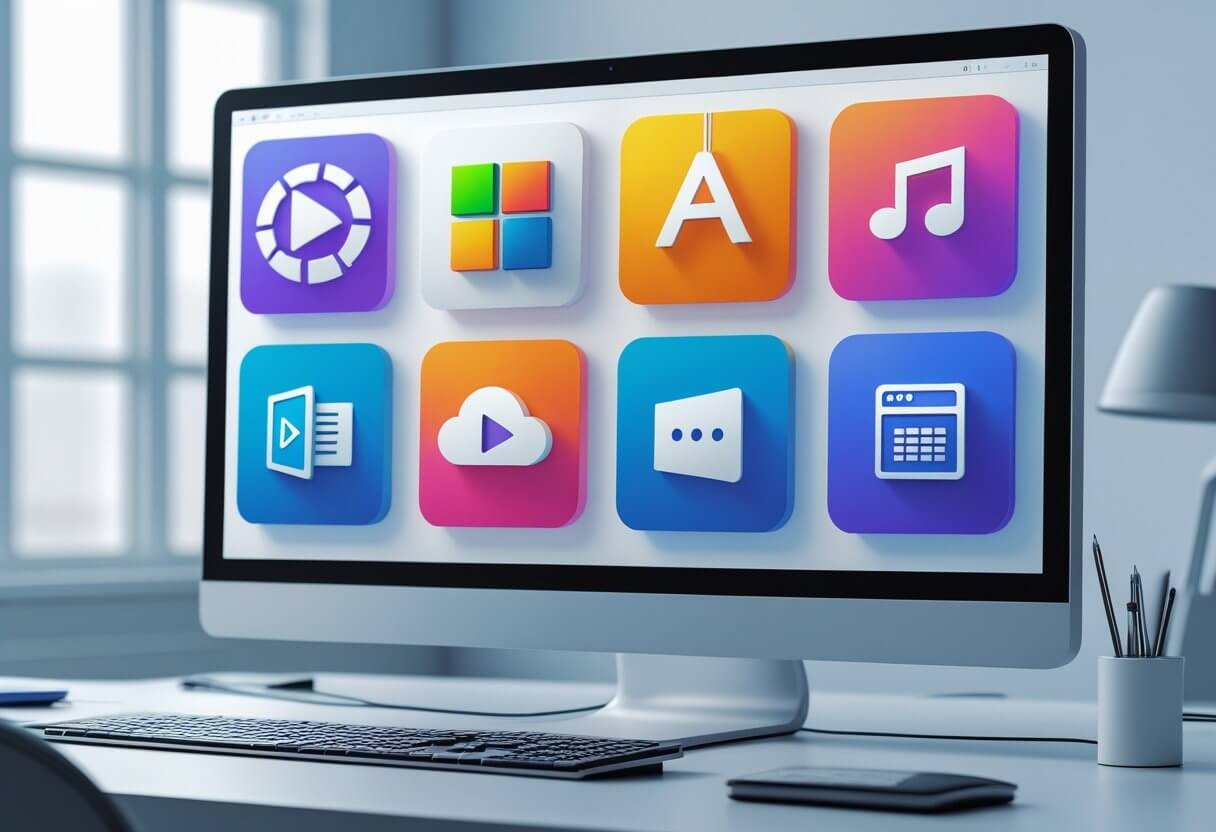Windows computers face a steady barrage of security threats—malware, hackers, data leaks, you name it. And honestly, a lot of people leave their systems wide open by skipping over the security features that Windows already provides.
Getting familiar with Windows’ core security features and actually turning them on can make a real difference. These layers work together—network filtering, drive encryption, threat detection—to build a pretty solid wall against most cyber nastiness.
1) Enable Windows Defender and keep it updated

Windows Defender is your built-in security guard. It blocks viruses, malware, and other threats—no need to buy extra antivirus if you don’t want to.
If you’re running Windows 10 or 11, Defender is probably already on. You can double-check by going to Settings > Update & Security > Windows Security > Virus & threat protection.
It’s always watching in real time, scanning programs and files as you use them. This helps catch threats before they can do any harm.
But here’s the thing: Defender needs fresh updates to keep up with new threats. Windows Update handles this if you let it. Make sure automatic updates are on—old definitions are basically an unlocked door for new malware.
Defender works hand-in-hand with other Windows security tools like the firewall, so you get a layered approach without a lot of hassle. The integration is pretty seamless.
It’s smart to check every so often that Defender is still running like it should. A quick look keeps your protection on track.
2) Turn on Windows Firewall for network protection

Think of Windows Firewall as a bouncer for your network. It checks all incoming and outgoing traffic, blocking anything suspicious or unauthorized.
The firewall uses rules—like which IPs, ports, or programs get a pass. You can view and tweak these in the Windows Security app, where you’ll see the status for each network profile.
There are three profiles: Domain, Private, and Public. Each one adjusts the level of protection based on where you’re connected.
To make sure you’re covered, go to Windows Security, then Firewall & Network Protection, and flip the firewall on for every profile you use.
Keep that firewall up at all times. It’s one of the best defenses against malware sneaking in or data leaking out.
After updates or big changes, it’s worth glancing at the firewall status again—sometimes settings get flipped without you noticing.
3) Use BitLocker to encrypt your drives
BitLocker is Windows’ built-in encryption tool for Pro, Enterprise, or Education editions. It locks down your data by scrambling everything on a drive, so if your device gets lost or stolen, your files stay private.
You can use BitLocker for internal drives and for external ones too (that’s BitLocker To Go). Encrypt a drive manually or let your organization’s IT handle it with policies.
Once BitLocker’s set up, your files are unreadable without the right password or key. If someone grabs your computer, they can’t just plug the drive in somewhere else and poke around.
Setup includes creating a recovery key—don’t lose this! If you forget your password, it’s the only way back in.
BitLocker works with TPM chips and PINs for extra security. The encryption process happens quietly in the background, so you don’t really notice it day to day.
For external drives, BitLocker To Go keeps your portable data safe when you’re on the move.
4) Keep Windows and all software up to date with automatic updates
Updates matter—a lot. They patch security holes, fix bugs, and improve performance. Without them, hackers can exploit known weaknesses in your system.
Windows makes it pretty easy. Automatic updates are built in; just make sure they’re enabled in Windows Update settings.
Microsoft Update goes beyond just Windows itself. It covers Office, other Microsoft apps, even some third-party drivers.
For other programs, you’ll need to handle updates separately. Most have an auto-update setting somewhere in their menus.
If you’re the type who likes efficiency, package managers let you update a bunch of programs at once—one click, done.
Windows 11 usually pushes updates automatically, but you can still check manually if you’re feeling proactive.
Letting updates run automatically saves a lot of time and hassle. You get the latest protections without having to think about it every week.
Staying updated also means fewer crashes and better compatibility. Plus, you might get new features or improvements as a bonus.
How Windows Security Features Work
Windows security stacks multiple layers—Defender scans in real time, the firewall watches your network, and together they block most attacks before you even notice.
Role of Microsoft Defender
Microsoft Defender is your main antivirus. It runs all the time, scanning files, downloads, and apps as you use them. It uses both signature checks and behavioral analysis to spot threats.
Core Protection Methods:
- Real-time protection keeps an eye on file changes
- Cloud-delivered protection checks suspicious files against Microsoft’s threat database
- Automatic sample submission sends unknown files to Microsoft for deeper analysis
Virus definitions update several times a day via Windows Update. If Defender finds something nasty, it quarantines the file and lets you know right away.
On Windows 11, Defender teams up with Smart App Control, which blocks unknown apps using machine learning and reputation data.
Another handy feature: Controlled Folder Access. It stops shady programs from messing with your important folders like Documents and Pictures.
Built-In Firewall Protections
Windows Firewall checks all network traffic, using preset rules to block most incoming connections and allow safe outbound traffic from your apps.
The firewall uses three network profiles: Domain, Private, and Public. Each one tweaks the security level depending on where you’re connected.
Key Firewall Functions:
- Blocks sketchy inbound connections
- Watches outbound traffic from your programs
- Sets up rules automatically for Windows services
- Lets you create custom rules for specific apps
You can set up custom rules through Windows Security or Group Policy. The firewall keeps logs of blocked connections and security events, so if something weird happens, you (or your IT team) can check it out.
There’s also Windows Defender Firewall with Advanced Security for more detailed control over protocols, ports, and app permissions—handy for power users or admins.
Understanding User Accountability
User accountability is all about managing who can do what on the system and making sure critical patches get installed. These controls help block unauthorized changes and keep up with new threats.
Importance of User Permissions
User Account Control (UAC) is Windows’ main line of defense against unwanted system tweaks. It asks for admin approval when a program tries to make changes that could affect your computer’s security or stability.
By default, most apps run with standard user rights, not full admin powers. If something needs more, you’ll get a pop-up asking for the green light.
Standard users get these protections:
- Can’t install most software
- Limited access to system files
- Blocked from changing security settings
- Can’t mess with other user accounts
Even admin accounts get UAC prompts for risky actions. This stops malware from sneaking in with elevated privileges, even if you’re logged in as an admin.
You can tweak UAC in the Control Panel, but honestly, it’s best to leave it on the default setting. Turning it off removes a key security barrier and opens the door to trouble.
UAC works together with other Windows security policies, layering up the defenses. In businesses, IT often sets stricter UAC rules to keep systems locked down.
The Value of Regular Updates
Windows Update keeps your system patched against newly discovered vulnerabilities. Attackers are quick to pounce on critical flaws, so these fixes matter more than you might think.
Microsoft sticks to a monthly rhythm—Patch Tuesday lands on the second Tuesday, but sometimes they’ll push out an emergency fix if something really urgent pops up.
Key update categories include:
- Security updates: Patch up vulnerabilities and security holes
- Critical updates: Tackle serious stability or security problems
- Driver updates: Improve hardware compatibility and security
- Cumulative updates: Roll several fixes into one package
If you put off updates, you’re basically leaving the door open for known attacks. Hackers watch for these opportunities and move fast after vulnerabilities get publicized.
Windows 11 usually installs updates automatically, so you don’t have to worry too much about missing out. Still, you can pick when your PC restarts, which is honestly a relief if you’re in the middle of something important.
Twice a year, feature updates show up with new security options and some fresh features. They’re a bit heavier on system resources, but, in my opinion, the extra protection is worth the hassle.






